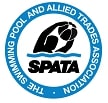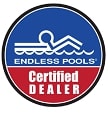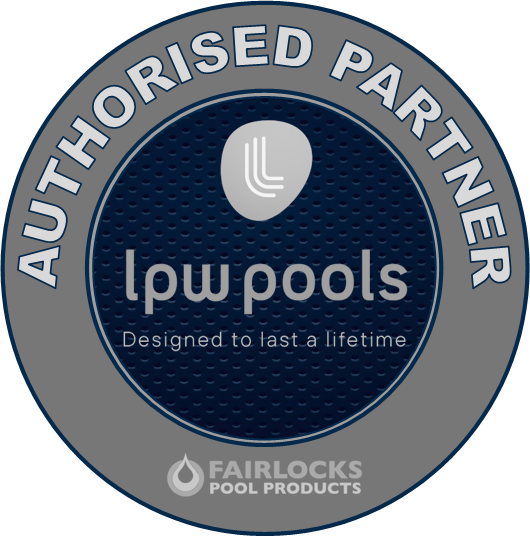Chlorine
 When chlorine is added to pool or spa water a portion is consumed in the process when it destroys bacteria, algae and other contaminants introduced to the swimming pool or hot tub water. The amount of chlorine consumed is known as chlorine demand. Sunlight, bacteria, perspiration, urine, algae, make up, fake tan and many other forms of debris all create this chlorine demand.
When chlorine is added to pool or spa water a portion is consumed in the process when it destroys bacteria, algae and other contaminants introduced to the swimming pool or hot tub water. The amount of chlorine consumed is known as chlorine demand. Sunlight, bacteria, perspiration, urine, algae, make up, fake tan and many other forms of debris all create this chlorine demand.
Once this initial demand has been met, the chlorine that remains in the water is referred to as the total residual chlorine, which is a combination of free available chlorine and combined chlorine. The free available chlorine is the active chlorine that’s left to kill any new contaminants entering the pool or spa. Combined chlorine is tied up in nitrogen and ammonia compounds referred to as chloramines, which remain in the water from organic waste from swimmers and bathers. Chloramines are responsible for eye irritation and the chlorine odour that some people find offensive. When chlorine is tied up in chloramines it loses most of it’s effectiveness as a sanitiser.
To keep a swimming pool or hot tub sanitary with chlorine it is necessary to maintain the following free chlorine residuals:
- Residential Pools between 1.0 and 3.0ppm
- Commercial Pools between 1.5 and 2.0ppm using Calcium Hypochlorite or Liquid Chlorine, sometimes a little lower if using UV
- Residential & Commercial Hot tubs and Spas between 3.0 and 5.0ppm
When levels are kept within this range chlorine is able to control organisms as well as destroying any new contaminants entering the pool or hot tub.
Super Chlorination
Super chlorination is recommended as a weekly treatment if temperatures exceed 90 degrees, when your swimming pool or spa is receiving a heavy bather or swimmer load, is subject to long periods of rain or when high winds carry debris and pollen into your pool. Super chlorination is the addition of an extra dose of chlorine to pool or spa water, which brings the free available chlorine levels to 3.0 to 5.0ppm (Generally a super chlorination boosts the free chlorine level up to between 5 – 10ppm). This helps restore the chlorine’s ability to control algae and bacteria. Some algae spores can also become immune to small doses of sanitisers so super chlorination can help combat this.
Shock Treatment
 Shock treatment is a larger dose of chlorine to bring the free available chlorine level up to 10ppm. This is intended to control visible algae, burn out organic swimmer and bather waste and destroy excess chloramines. When swimmers complain of burning eyes and a strong chlorine smell, it is due to excess chloramines and not enough free available chlorine residual in the water - not too much! The odour can also be even stronger if the pH is also low. The use of a periodic shock treatment along with a normal chlorination routine will aid in the prevention of undesirable side effects of using your swimming pool or hot tub. After shock treatment do not resume swimming or bathing until the chlorine residual drops to below 3ppm.
Shock treatment is a larger dose of chlorine to bring the free available chlorine level up to 10ppm. This is intended to control visible algae, burn out organic swimmer and bather waste and destroy excess chloramines. When swimmers complain of burning eyes and a strong chlorine smell, it is due to excess chloramines and not enough free available chlorine residual in the water - not too much! The odour can also be even stronger if the pH is also low. The use of a periodic shock treatment along with a normal chlorination routine will aid in the prevention of undesirable side effects of using your swimming pool or hot tub. After shock treatment do not resume swimming or bathing until the chlorine residual drops to below 3ppm.
Please note, if your chlorine reading is very high, typically 10ppm, you may obtain a false result when testing for pH with a testing kit. In these cases lower the chlorine levels first before testing for pH and total alkalinity.
Bromine
Bromine is another type of pool and hot tub sanitiser, although it is quite different to chlorine. If you using Bromine you won’t require a conditioner (an additive that helps prevent chemicals dissipating under the action of the ultraviolet rays of the sun). Like chlorine, bromine combines with nitrogen and ammonia compounds to form bromamines (as opposed to chloramines). Unlike chloramines, bromamines do not irritate eyes or have an offensive odour, and bromamines are effective sanitisers. Bromine is a more effective sanitiser at higher temperatures and therefore is a popular choice for hot tubs and with pool and spa users that dislike the unpleasant odour associated with chloramines.
A molecule of bromine is 2.25 times as heavy as chlorine, a 1.0ppm chlorine residual is therefore equivalent to a 2.25ppm bromine residual. Therefore, it is important to maintain the following bromine levels:
- Residential & Commercial Pools between 2.0 and 4.0ppm
- Residential Hot tubs and Spas between 3.0 and 5.0ppm
- Commercial Hot tubs and Spas between 4.0 and 6.0ppm
When levels are kept within this range bromine is able to control organisms as well as destroying any new contaminants entering the pool and hot tub.
PH & Total Alkalinity
The two most important factors in controlling your sanitisers ability to kill bacteria are pH and total alkalinity levels.
 pH is a value expressing the relative acidity or alkalinity of swimming pool or hot tub water. It is expressed as a number from 0 to 14 with 0 being the most acidic and 14 being the most alkaline. A value of 7.0 is neutral. Low pH values cause corrosion of equipment and pool or spa surfaces. High pH values cause scale to form on equipment and on pool or hot tub surfaces. The ideal range for pools is 7.2 - 7.6 and the ideal range for hot tubs is 7.0 - 7.6. For swimming pools, to raise pH you will need to use Sodium Carbonate or PAK 2 and to lower pH you will need to use Sodium Bisulphate or Pool Acid. For hot tubs, to raise pH you will need to use Aquasparkle pH Plus and to lower pH you will need to use Aquasparkle pH Minus.
pH is a value expressing the relative acidity or alkalinity of swimming pool or hot tub water. It is expressed as a number from 0 to 14 with 0 being the most acidic and 14 being the most alkaline. A value of 7.0 is neutral. Low pH values cause corrosion of equipment and pool or spa surfaces. High pH values cause scale to form on equipment and on pool or hot tub surfaces. The ideal range for pools is 7.2 - 7.6 and the ideal range for hot tubs is 7.0 - 7.6. For swimming pools, to raise pH you will need to use Sodium Carbonate or PAK 2 and to lower pH you will need to use Sodium Bisulphate or Pool Acid. For hot tubs, to raise pH you will need to use Aquasparkle pH Plus and to lower pH you will need to use Aquasparkle pH Minus.
Total Alkalinity is the ability of water to resist a change in pH. It is also commonly known as the buffering capacity of water. High alkalinity makes it hard to change the pH and may cause scale. Low alkalinity causes dramatic changes in pH, often referred to as pH bounce, and causes corrosion of equipment and pool or hot tub surfaces. The ideal total alkalinity varies depending on the type of sanitiser you are using. For swimming pools, to adjust your Total Alkalinity you will need to use Bicarbonate of Soda or PAK 1. For hot tubs you will need to use Aquasparkle TA Plus.
Always remember, total alkalinity is the key to water balance. Always adjust total alkalinity first and then adjust the pH.
| Sanitiser type | Ideal Total Alkalinity range |
|
Liquid Chlorine |
80 - 100ppm |
|
Gas Chlorine |
120 - 140ppm |
|
Dichlor granules |
100 - 120ppm |
pH and Total Alkalinity are related. It is not possible to change one without affecting the other.
Conditioner or Stabiliser
Whatever type of chlorine chemical you use in your swimming pool or hot tub as a disinfectant is a very active chemical that is easily dissipated by the ultraviolet rays of the sun. To prolong the useful life of free, available chlorine the addition of cyanuric acid (conditioner) is recommended when filling a new pool or at the start of each swimming season if required. Conditioner acts as a type of chemical umbrella, protecting the chlorine sanitiser against loss against the sun’s UV rays. The ideal range for pool stabiliser is 30 - 50ppm. All Swim Conditioner is ideal for adjusting the levels of stabiliser in your swimming pool.
Calcium Hardness
 Calcium hardness refers to the portion of the swimming pool or hot tub water’s total hardness due to calcium salts. Calcium hardness will vary with your local water source, the chemicals you add to the water and the rate of evaporation. If you’re based in Wales you can check your local authority’s source water quality at the Welsh Water website.
Calcium hardness refers to the portion of the swimming pool or hot tub water’s total hardness due to calcium salts. Calcium hardness will vary with your local water source, the chemicals you add to the water and the rate of evaporation. If you’re based in Wales you can check your local authority’s source water quality at the Welsh Water website.
High calcium hardness can cause cloudy water and also cause the formation of scale on pool and spa equipment. If hardness reaches a level of 400ppm, approximately 25% of the pool or spa water it should be drained and refilled. Soft water without hardness is undesirable because it can cause equipment corrosion and adversely affect the grout on concrete tiled pools. Recommended hardness levels are 200-400ppm for tiled pools and 175-250ppm for vinyl, fibreglass or other types of pool and spa surfaces. Increasing water hardness can be achieved with the use of All Swim’s Pak 3, Calcium Chloride.






























































































